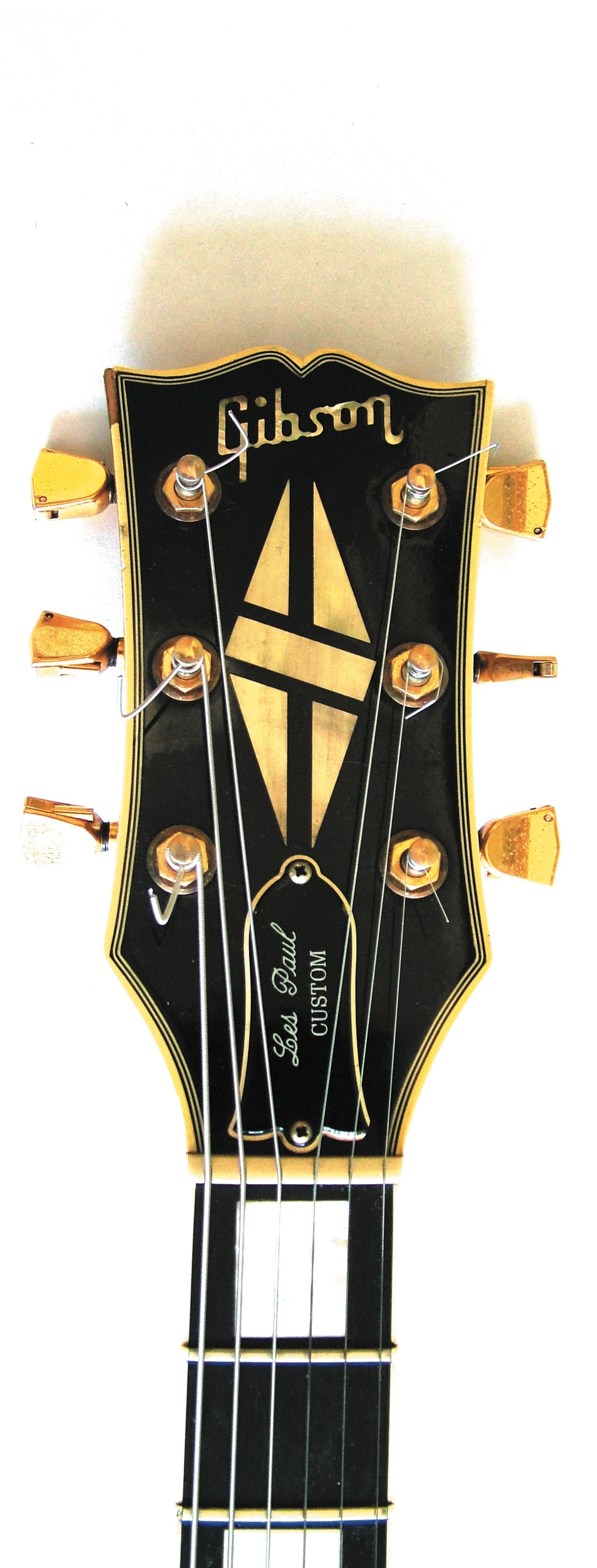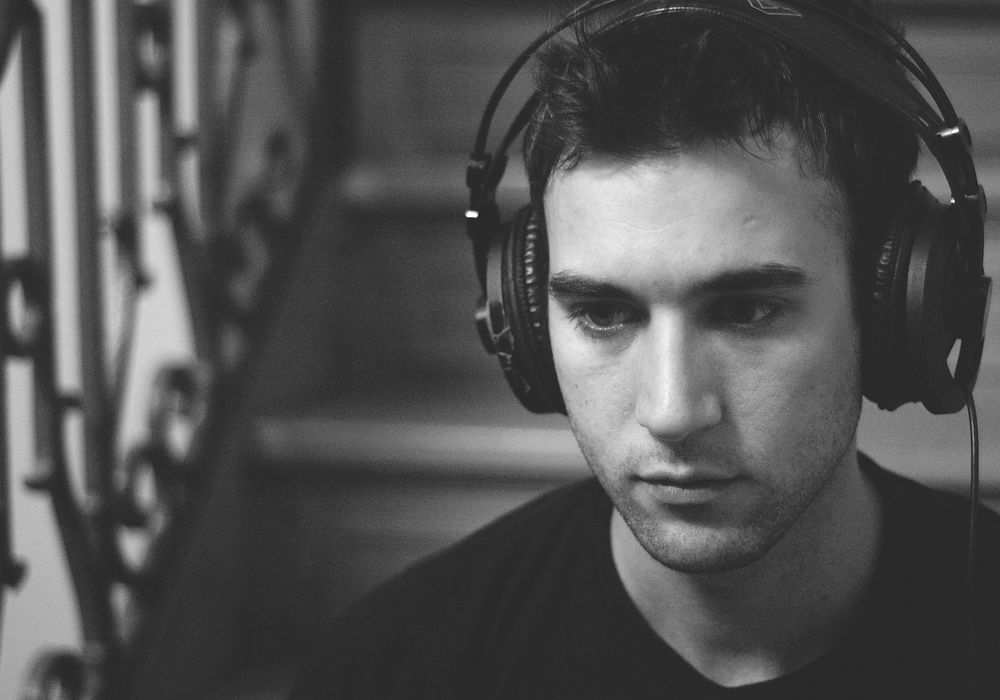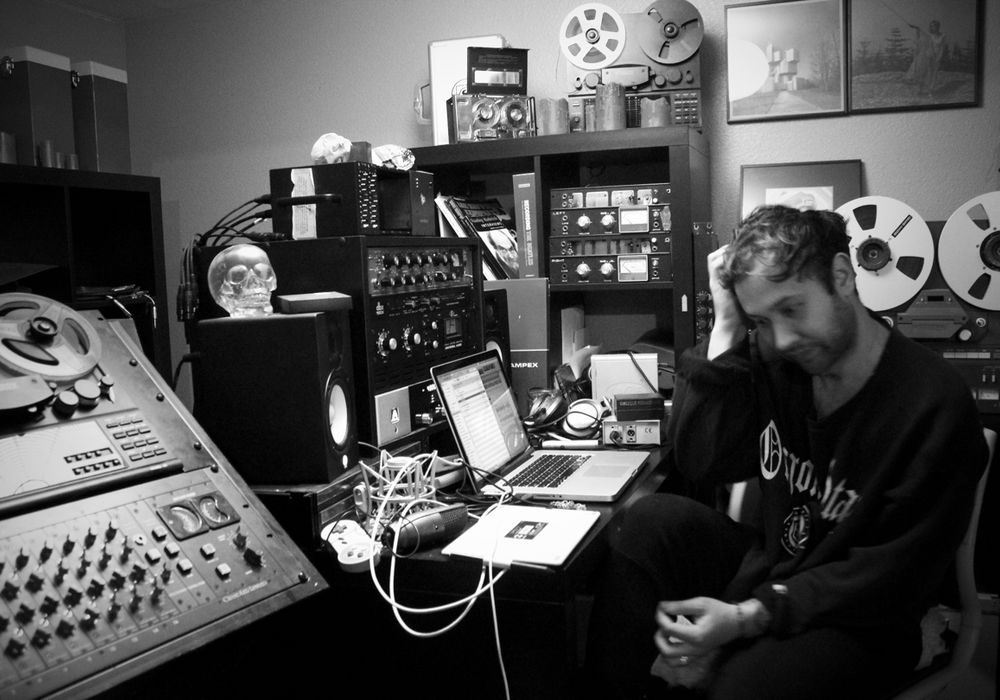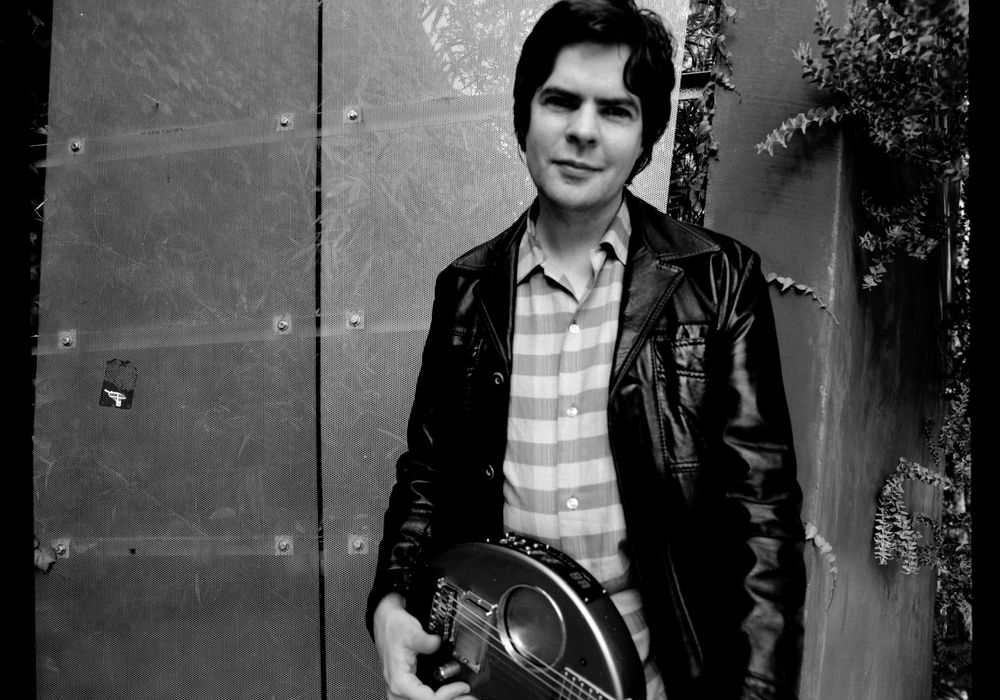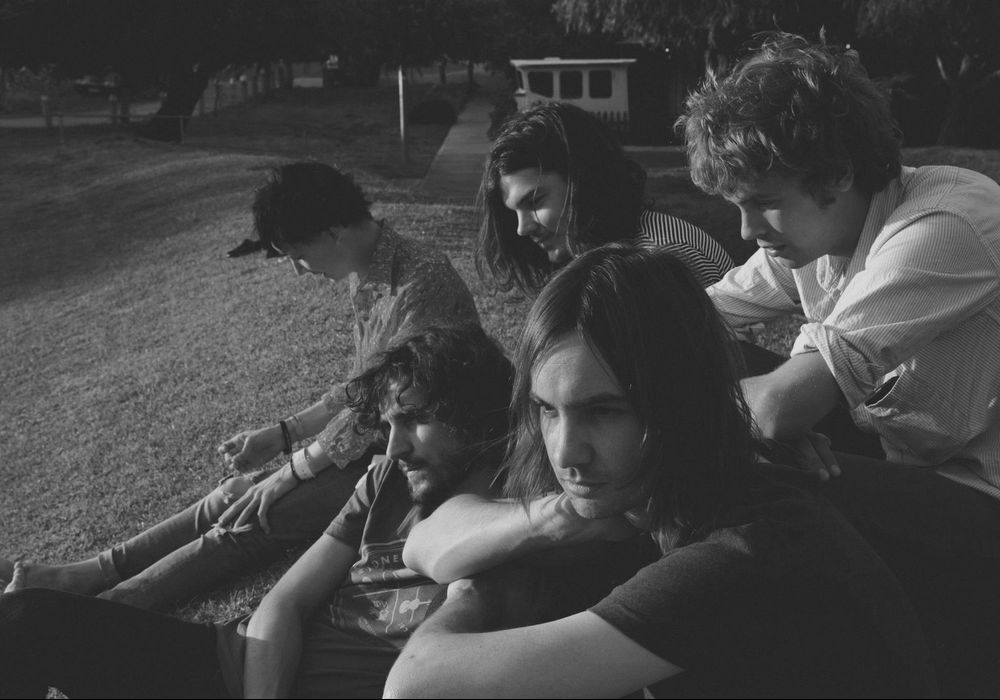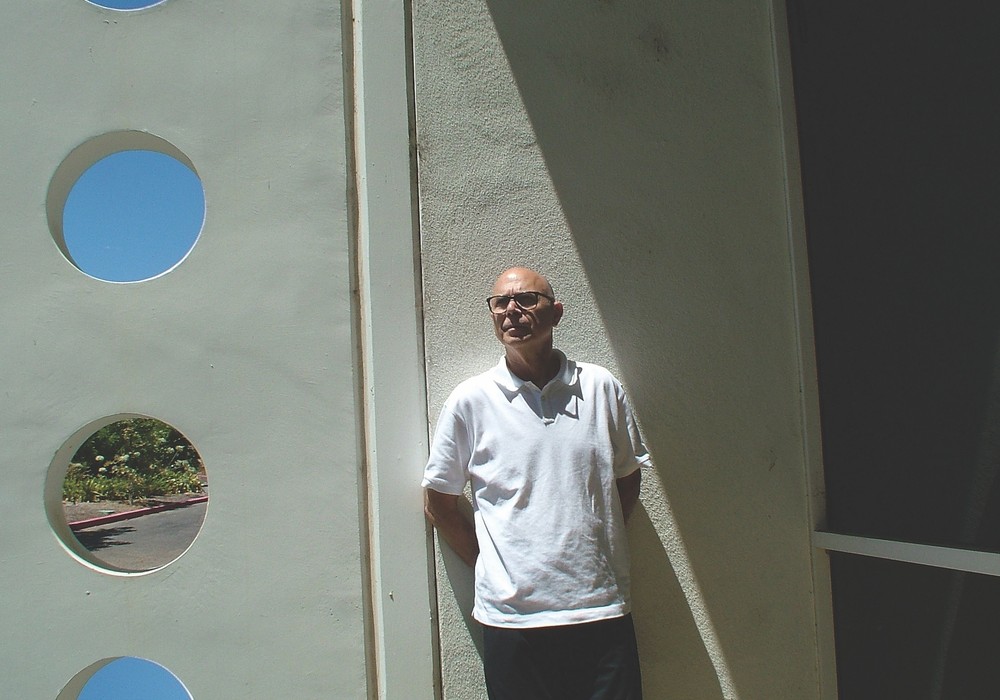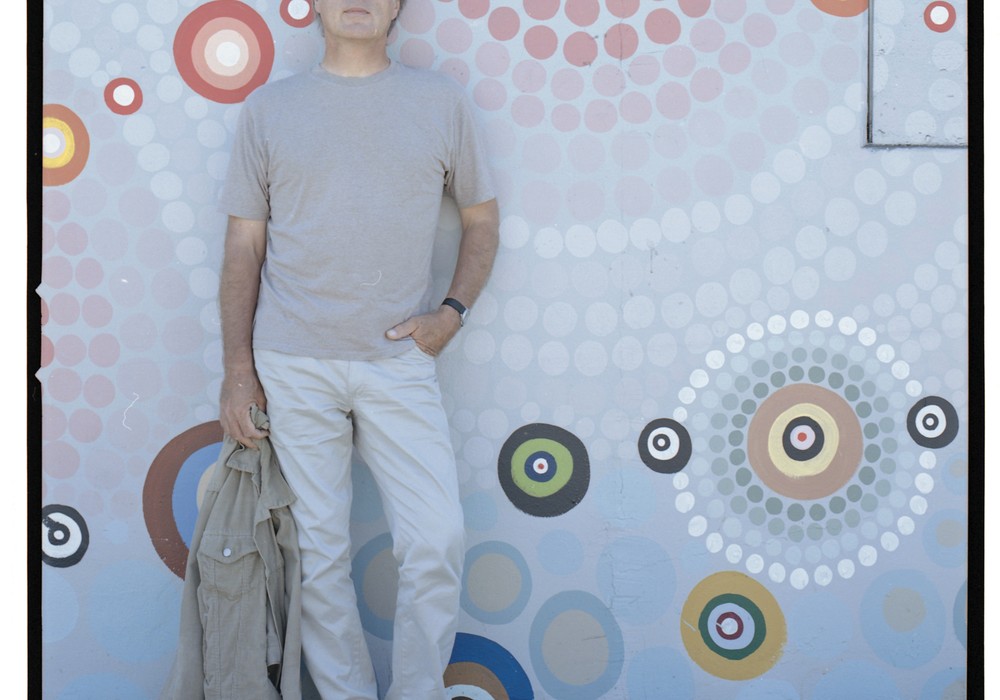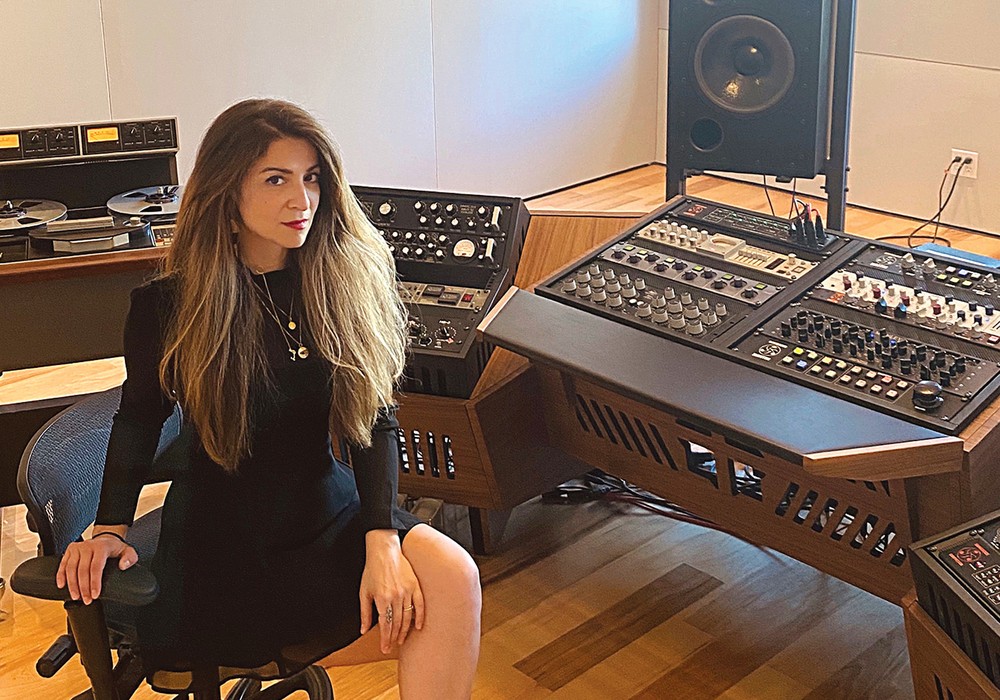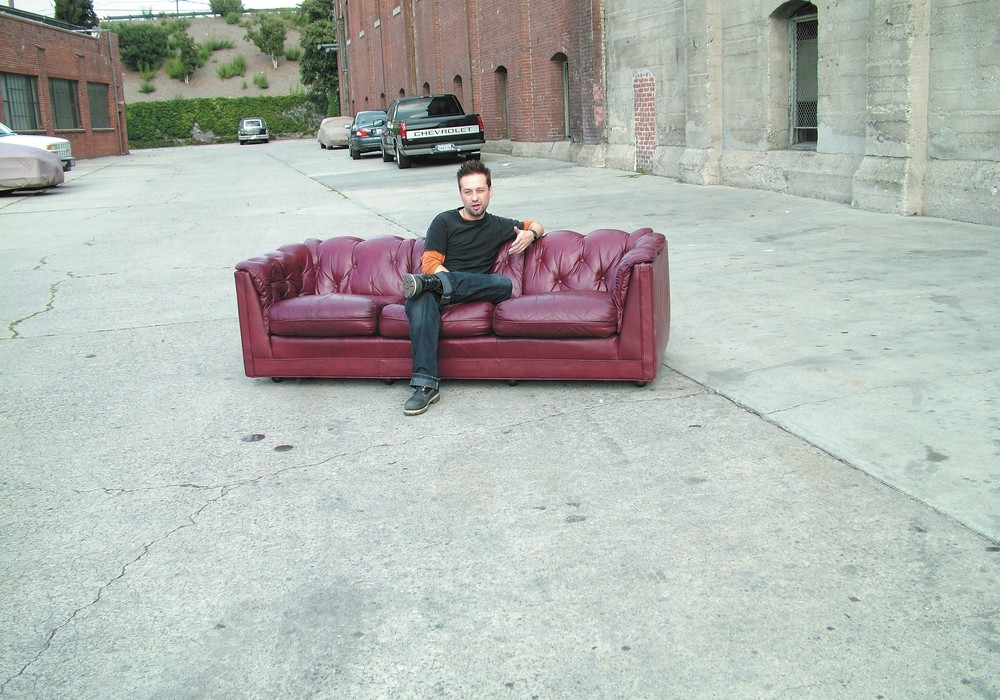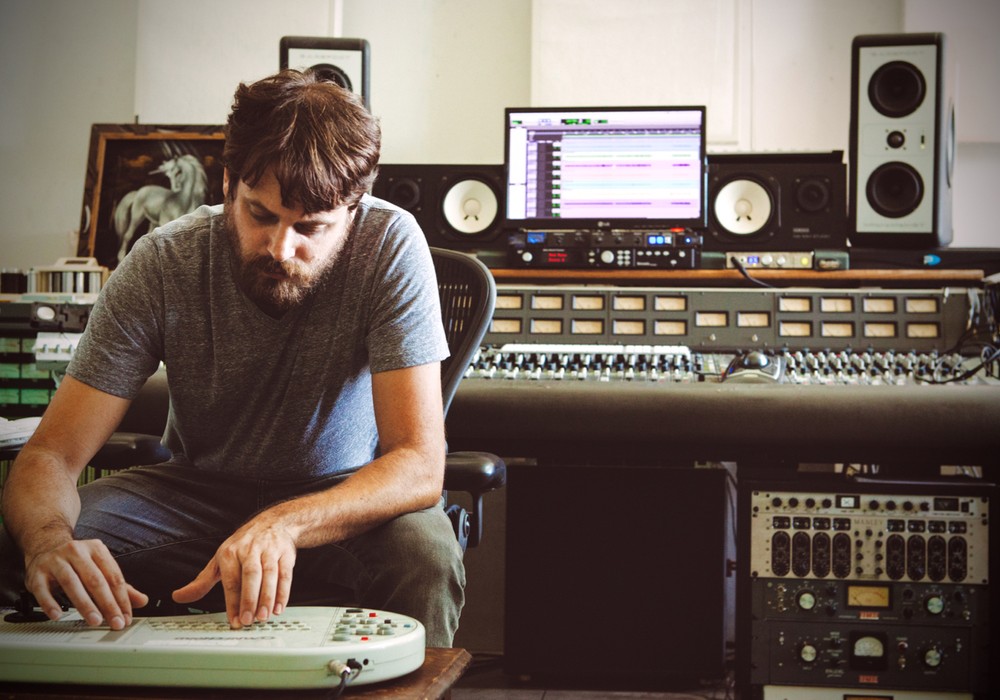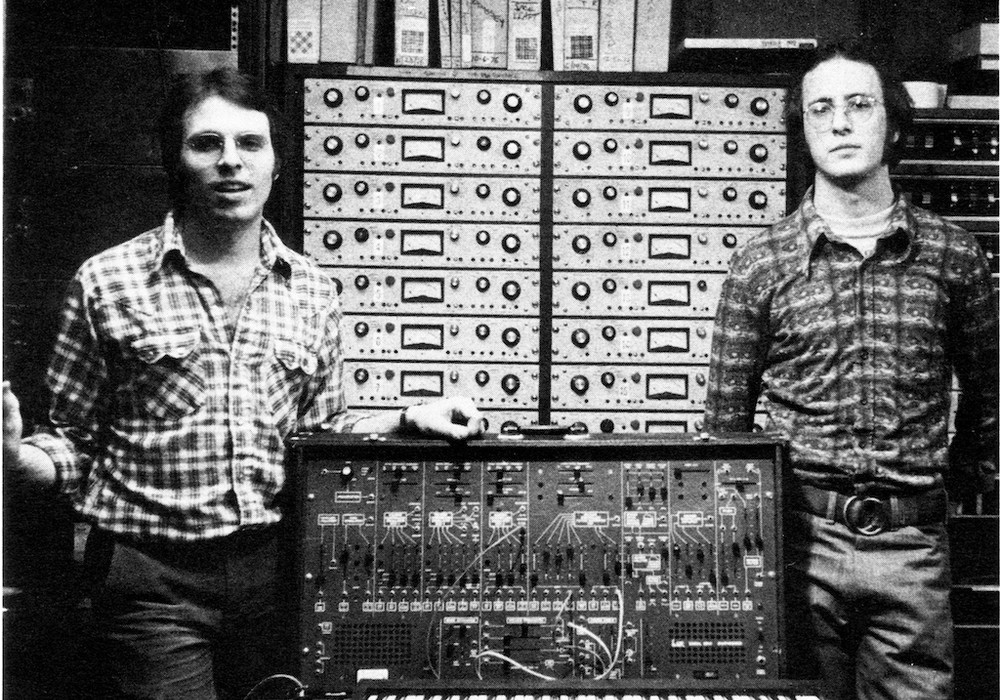Any one of Les Paul's amazing careers would make him remarkable. His wide-ranging excellence (and longevity) make him a legend and a living treasure. He is in the hall of fame for songwriting, invention and rock and roll — and has earned five Grammy awards. Les Paul celebrated his 90th birthday June 2005 at a Carnegie Hall concert, and continues to celebrate with his twice-nightly Monday gigs at the Iridium in NYC. This year he's working on a box set, at least two books, a documentary and new inventions. His new "rock" record, Les Paul & Friends: American Made, World Played, makes him the oldest artist to debut a record on the Billboard Hot 200 charts. Les is widely hailed as the father of the electric guitar, the originator of multitrack recording and pioneer of many recording techniques that we use today. As a sign of commitment to music making, consider that after a near-fatal car crash in 1948, Les had his right arm pinned in position to cradle and play the guitar, where it remains.
At Les' home sits the Octopus and Monster, the first multitrack tape rig, still running. Guitars, amps, loudspeakers and recording gear from the beginning to today surround us — point in any direction, and there is an Ampex tape machine. Across the kitchen counter with a Les Paul guitar and Fender Twin at his knee, our host generously and graciously dispenses enlightenment, anecdotes and popcorn — from 8 pm to 6:30 am for several nights. As Dale Epperson and Elliott Liggett tend to the API console in one of the three home studios, the names of those he has known parade by: Autry, Hendrix, Django, Jeff Beck, Bill Putnam, Sr. These are excerpts from hours of conversation. I wish you could have been there.
So, how are you doing?
I'm doing good, doing what I want to do — keep fooling around electronically. Not that I really want to do it, but I have a lot of archiving to do — that's a headache. I figure we need to get the front end worked out, the workstation.
The first question- would you want to duplicate the recording that you've made with the EQ, and would your judgment be right? Let's say the BBC or RCA made it, or it had an AES curve — you're taking this phonograph record, and what have they done to it at the board?
The EQ is built into the system, not just what the board is doing, but the recording. This creates a whole mess of problems because the alternative to that is, don't do any of it — do your transferring of your message. Do it raw so that whatever is on that recording is what you put over. And then later, say they developed a better speaker system, a better way of EQ'ing with the type of recording that you wish to do at that time — it may change.
Also, those recordings were made with a certain reproduction system in mind that had a sound of its own — the rooms might even sound different, certainly the electronics and speakers were different — so it's almost a question of what "preservation" means. You can't help changing it, but what direction do you take it in, and how far do you let it go? It's a funny thing, because you end up with people who are, say, archiving cylinder recordings. They can go in and take out the surface noise and make the record technically better, clearer than the original master. That isn't really archiving, it's painting over it — it's painting mustaches on the Mona Lisa.
[laughs] That's right — that's where I'm at. A couple of years ago, they played me a [1931] record of Rudy Vallee, and they'd put this through the carwash — they spent a long time developing a system that would eliminate all the noises, fill in the holes by taking from here and from there, as if you were in Photoshop. I listened to Rudy Vallee — [it] sounded like it was recorded yesterday. Now, there you go with putting the mustache on.
It is interesting philosophically, and relates to your work with multitrack, because it's all interrelated. For example, with Rudy Vallee, his style of singing came from the way he interacted with the technology of the day. There were no high quality PAs, and to get any signal, he had to sing a certain way. Even from the beginning, from [Enrico] Caruso or whoever, the technology influenced both the artists and the performance.
It's part of it — here I am, terribly interested, attracted to something that my brother wouldn't be caught dead with — like he threw the switch and the light went on. It never seemed to interest him — there was no curiosity about it at all. If you want the light on, throw the switch and it's on. I wanted to know "What's making this light light? How is the light built?" All the things that continue to expand go on to more complicated things. It's an education — you're striving to be informed of all this stuff that you're curious about. For some reason, at a very early age, I was turned onto all these things that I had no answers to. The first one was when I was in a crib or playpen with the mumps. There's a big bay window in the living room where they had me, and across the street is a railroad. What interested me was that when that train started to chug away, there was a frequency that was sympathetic to the pane in the bay window. I said, "Every time that train reaches that note, this bay window starts to resonate." And then I would damp the window with my hand. And I'd say, "Now this is interesting" — if he got faster or slower, the window didn't respond. Now, this curiosity — immediately I went to my dad and he said, "We'll have to take you to the teacher at the school." At that time I might have been in first grade or kindergarten. Then they explained to me what resonance is, what this whole thing is about, and how this frequency is transmitted. I'm riding in the car with my dad. I said, "The same condition is happening in the car. When I look at your speedometer, and it says 32 miles an hour, there's a condition that happens. When you talk to me your voice wavers. It only happens when you reach this speed, or when you double that speed," which is a harmonic of the fundamental. The third one that came along was that when I was told to go to bed, I'd have to go up the stairs, and the banister was like a xylophone. I hit one and it was it was the low note because you're at the bottom of the stairs, and as you go up the stair the planks of wood became shorter. And finally my brother came to my mother and says, "The kid's at it again. He's in there and he's adding wood to one and he's taking wood away from another one." What I was doing was tuning the actual planks of wood so that I could play a tune going to bed. [laughter] I think these are things that are just gifts with people, and it's unexplainable how you happen to be given that and not the next guy. See, I never was educated. I left home when I was 13.
That's an education.
[laughter] Well, I'm talking about a regular go-to-school formal education.
Yes, but the best education is the one that teaches you the most, right?
The recording — I just had to pick it up wherever I could. In my home we had a Victrola — a gramophone. Every Wednesday if I'd behaved, if I did my chores, I got the crank. I'd get the winder, and I'd wind that sumbitch up and for an hour I'd get to play records.
It was a disc gramophone, not a cylinder machine?
I never had a cylinder machine. I started out knowing about Edison, and I knew the principal things that you had to know to make a phono record, so I immediately went to my dad's garage and asked my dad, "What have you got that I could use as a turntable?" So a mechanic — his name was Hooks — says, "What you want is a Cadillac flywheel, a dynamically balanced wheel." Later when I was getting my teeth cleaned, I saw these belts that were moving the drills. He says, "I can get them for you, tell me what you want." "I want these endless belts, round. I don't want a grooved belt" — and built my first recording lathe. I just wrote to Lafayette Radio or Allied Radio, one of those two, got a Webster cutting head. What I'd done previous to that was simple — I'd just removed the speaker wires and put on a phonograph pickup — where you put the needle in. It was the first year that they came out with an electrical pickup — all the rest was the horn. So, I turned the radio up a little at a time and felt it with my hand, felt the needle move. I knew that this radio came all the way from the transmitter through the air, down the antenna, though the radio, out of the radio into the pickup and moved the needle. Now you have to make lines, so I'm back to the garage again. I knew that they had lathes there. Sure enough, there was that lead screw to feed this thing across the record. I got an aluminum disc and managed to get the record recorded, and I could hear myself — took the mouthpiece off the telephone, hooked it to the input of the grid of the tube, made some noise — sang into it, played into it — first record, it's out there and it's recorded. I went crazy. I could hear what I was doing, and even though it wasn't great fidelity, it was there. The regular steps that anybody would take that's interested would be to improve on it. So the next thing to do is to get a microphone. The guy says, "You mean a transducer." So I learned the word. And it was just a thing where, as a little kid you'd say, "I've got a problem and there's something out there that can solve the problem." And so, that was the way it started. It was great. In the meantime I am being exposed to the fundamentals of electronics.
So, you were cutting from the inside out?
That's right. If you'd go from the outside, which is high fidelity, to the inside where the tracking error was very bad and the velocity was slower — at the end of the fifteen minutes of a half hour show, you can hardly understand what the guy's saying. And then you drop the needle at the outside of the next fifteen minutes, and they go into shock because it's all highs. Equalizing and all that stuff was not common. In fact, I never saw it in my early years of radio, never saw a tone control or EQ in a broadcasting station. The recording studios were so far behind in auxiliary equipment, outboard equipment. They didn't have the limiters, compressors, equalizers and filters, didn't use them. When I went to California I says, "To hell with the broadcast studios and the recording studios, because they're way behind." So I just got off my duff and went right over to the movie lot. I'd go over to the studios and I'm seeing Victor Young with a 99-piece band, and I'd go into the recording room and see the equipment they have, and I say, "Well this is where it's at." This all came to me by way of Vitaphone, when they were just beginning to make talking pictures. When I went to Paramount, when I went to MGM, I'd say, "They're light years ahead of what we're doing." The broadcasting stations and the recording studios were so archaic, so far behind, I just turned my back on 'em. When I went out there, first thing that I said to my buddy Vern [Carson], "Who do you know who knows about speakers?" He says, "There's a guy named Jim Lansing, he's fooling around here on Vine Street in a little shop he's got." I was just a kid. I walked in and he was just using the cellular horn, talking into it. He had a guy there with a trench coat on — he's saying, "Do I sound louder? What's happening over there?" Guy's saying, "Well, you're a teeny bit down." I says, "You're 3 dB down." I'd just walked in through the door. He says, "What am I now?" "You're down twenty." So, we worked on it for about an hour, he didn't ask who I was or nothing. Finally he says, "Are you hungry?" I said, "A little bit." So we went to eat, he says, "Who are you?" [laughter] That's the first we met.
Wow, and how old were you at the time?
It was 1942 — I was born in 1915. Twenty-seven years old. He says, "What brings you over?" I say, "Well, I heard you make a good speaker." He says, "What are you going to do with it?" "I'm building a studio, I play the electric guitar." He says, "No electric guitar's going through my speaker!" [laughter] It was great for me, because I could learn speakers and learn what was going on. Jim Lansing was a great, very brilliant man and educated — and it was good to be around a person like that.
In your original studio that was in the garage, was it true that people had to climb in the window at first?
Yeah! What we did is we took the car up, put the piano in, boarded it up, and went in through the window until we made a door of the window. [laughter]
Did you actually have Groucho Marx and W.C. Fields climbing in through your window?
No, by then I had a door, but Mary [Ford] went through the window. I was the guy that started the close mic'ing. The big engineers out there, the guys that worked for [Bill] Putnam, they came to me and said, "You can't do that, Les." And I says, "Well, I'm doing it!" [laughter] Here's a [RCA] 44 mic, and all they're doing is thinking from a technical standpoint — that ribbon must be getting torn to shreds, because here's a trumpet and pow! When he hits that damn thing that ribbon is going crazy, right? I didn't look at it that way. I says, "Try it." It didn't do any harm, so I left it that way. And I never blew a ribbon out of a mic yet with a saxophone or a horn.
Do you feel that that you developed your multitrack recording to suit your playing, and did it change the way you played?
Well, to begin with, the first thing that I did was to build a recording machine so that I could hear what other people said I sounded like. No matter what someone tells you, there's nothing like seeing a picture of yourself, and hearing this recording — it's the honest to god truth — that was the first thing that I wished to do. From the time that I started making a recording device, I became involved in [the idea] that there was no hum, there was no hiss and that the frequency response was to cover the full range. Once I had that, then the next thing I wanted to do was to lay these parts down so that I could expand farther in the direction of multitrack recording. That came from the player piano, of all things. I could punch a hole where I wished, and if you slowed the piano roll down, the pitch remained the same. The phonograph record right next to me, if I put my hand on it, to slow it down, why my voice was lower. So immediately I'm escorted to the library to find out what audio was all about. And here I am, just out of kindergarten and they're exposing me to audio and all those things. Of course that made it even more interesting, because I wanted to do multitrack recording — because I could spend many more hours, or I could play it the way I thought it should be played, rather then the way that it has to be played if someone else is playing it. You're at the mercy of the other person, and to transmit your idea into their head — it'd be like if you took a musician or an arranger, he hears exactly what this should sound like, but the guy he gets had a fight with his wife, and he's playing it with a lot of anger, right? So, to get the exact sound that you wish to get out of the exact instrument that you wish, to create new instruments, and new sounds — this is where I started to say, "I think I want to do this. I want to make a multitrack recording so that I can develop sounds that have never been heard of before, but I can hear them in my head. And if I haven't heard them as music, I may have heard them as some sort of pleasant noise."
You can compare it to painting- when you have access to the different paintbrushes, it becomes more precisely what you have in mind as opposed to the experience of directing people who each have their own brush.
Yeah, each guy takes a brush and goes his way. Of course the downside is that maybe you're not that talented as to be able to play each part or reproduce these particular sounds where another person could, and that's where the multitrack recording became — well, first I gotta correct that — it was sound on sound. Rubber tires, bias. I thought that was a picnic after dealing with cutting discs.
What are the difficulties of working with that?
Endless. Diameter problems — you've got to pre- emphasize the recording curve, and there's a reciprocal curve, and response of the cutting heads — all at Capitol had a big 7 dB peak at 7 kHz, and dove at 8 — it's gone. This is what they did — all of Sinatra, Nat Cole — all that stuff was done with a Presto head. Decca was using Westrex, much better equipment, but they were making them on sawdust and glue — the worst pressings in the world. But they used the finest equipment to make that bad record. In 1945 Judy Garland and I were at 53rd and Broadway, where Letterman is. This one guy is at the rehearsal and he's doing this. [beckons] "My name is Dick Ranger and I have something to talk to you about. Sherm Fairchild sent me over here, and I have a tape machine." "You got a what?" "I've got a tape machine." "What the hell is that?" "Well, why don't you come over and I'll show it to you? We've invaded Luxembourg, and came back with this tape machine, and I've made a Rangertone, which is like the Magnetophone — Hitler's job, you know?" So I went over there and I looked at the tape machine and I was very impressed with it — told Bing about it. I say, "Bing, you could do this right on the golf course if you have a tape machine. This is the way to go." Another guy that was with Ranger was Jack Mullins, and Jack also had assembled a tape machine out in his garage. So they put it together, took it up to Ampex, and I told Ranger to get to Bing and do it. He wasn't a good businessman — I wasn't either. Otherwise, I would have been deep into that. So that's how that first tape machine came out, you know? That was in 1945, so by '47, '48 there it was. In '48 I already did the first show with Bing on tape. I don't know if you know this, but tape was banned from all the networks, from all the radio stations — none of them used tape. They thought it would break — it was not tested. They transferred everything — all my shows, all Bing's shows — from tape to disc. So Bing made it a rule that it was going to be on tape, period. Finally got it on ABC, and it went on from there...
Were they making the tape at the same time, or did people make their own?
Well, Colonel Orr was in the Signal Corps along with the rest of them — he was from Alabama, and that is the perfect place to dig the ground up for iron oxide for tape. He went in the tape business, not with Col. Ranger, but along with him. Ranger was making the machine, and the other guy was making the tape. Finally Ampex was making the machine, and so I said to [Alexander] Poniatoff, "Why don't you buy the company?" So that's what they did. They bought Orr out, and made the Ampex tape. The division I was in of the armed forces and the Signal Corps out there, we would take Hitler's speech and edit it. That went for Churchill and Roosevelt, and we had three turntables. We'd do our editing slip-disc — three machines going down to the master machines. We couldn't figure out why the Germans were so much faster than we were and had better quality than we had. The beginning and end of their recording was the same. Ours got deeper and deeper as you went to the center of the record, you know? It was right after the war, when we invaded Luxembourg. And of course, the machines were all over the place — they were in the hundreds, if not more. Sure, so the Russians got 'em, everybody got 'em. So, Bing came over to the house, I'm in the back doing my stuff and he says, "I got something for you in the car." We went out to the car — I figured it was going to be Kraft cheese, or a Philco radio — something that he was going to give me — not knowing that it was going to be a tape machine, my original, which is in that room in there. It's the first Ampex 300. We grabbed it by the handles and brought it in, set it in the control room, and I never turned the tape machine on — went on doing what I was doing and I just thought about it. I was busy on discs at the time, and I'm going from one disc to the other while I'm thinking about the tape machine. And I thought this would make it possible to take one tape machine and go all over the country, and play in basements and filling stations and hotel rooms. I've got my complete recording facilities right there with me. We could do two things at once — we could perform at the theater, and then go home at night, and record with sound on sound. I said to Mary, "Forget the laundry, just pack the stuff up, we're leaving." "What about the radio show?" "We're going to do that on tape." She says, "You're what?" We're in New Mexico, Mary says, "How do you know this thing is going to work?" I say, "I drew it out on paper — it works." She said, "But you didn't try it. What if you're wrong?" I'd already called Ampex, told them to send me another playback head to Chicago. So by the time we enter Illinois, I'm beginning to wonder if Mary might not be right. [laughter] This great idea of mine is gonna hit the dust and I've got a show to do every Friday. And so we get to the hotel, the head's there, we drill a hole in there, mounted the head in there, got Mary to say, "1, 2, 3, 4, testing," and when it came back, there it is. So, the latter part of '48 and '49, we went to tape, and discarded the disc machines in the garage, 'cause that's it, it's over. And then came sound on sound, which is putting the fourth head on the machine and that was very exciting because then I could do these things. But you didn't have control — if you wanted to go back one part, you didn't do it quite right or you wanted to change something, had a better idea, it's too bad — you had to start at one and do them all.
That takes some courage.
Playback is the first head — as the tape is passing by, then you have the erase head, then the re-record head. In that way, you erase the sound after you've put your sound on with the previous sound. I thought this all up on an envelope. Then the idea crept into my mind that a better way would be to sel-sync the recordings and put them in line. Ampex and other recording devices at that time would stagger the heads so you couldn't edit them, and you couldn't do the things that I wished to do, where they aligned evenly and exactly. So when I got the idea in '53, Colonel Ranger was working right here for me, Rangertone, and he turned it down. I says, "Dick, it'll work." "No," he says, "You're going to have crosstalk and problems, you can't do that." So I figured well, I'll go to Westrex. I flew out to Hollywood — they turned me down. My buddy Vern Carson and I were standing outside of Westrex. He says, "Don't you have a round trip ticket for you and Mary to San Francisco? Let's go up and see what they've got up there in Redwood City." When I told Ampex about the tape machine, the idea, they leaped on it. No one had thought of it. They said sure, we can do it — we'll have to hire a crew. So they wrote me a letter, which I have here. They had to hire a staff of seven people to dedicate their time to doing nothing but make this multitrack machine. They flew it here — they didn't have a master oscillator on it, they were running at 30/60 and the EQs were wrong, just a ton of problems. So, I found a guy through Sherman Fairchild — he was a friend of mine. Rein Narma said he could help me design the console to marry to the tape machine — we'd have a master oscillator, and we could do the things that Ampex hadn't thought of. We turned it around where we were building the machine here, and sending back the changes to them. It took about five years before the public really got to realize how valuable that machine was. I walked into RCA in New York — I was walking down the hallway with the chief engineer, and he said, "There's one of your machines in the hallway, with a canvas cover over it" — it was an 8-track. And I says, "What the hell's it doing in the hallway?" He says, "Well, where are you going to find a Les Paul and Mary Ford?" They had not thought past the point of doing a multiple with just two people — that you could take an orchestra, and Benny Goodman could come in at any hour of the night and put his part down, or they could overdub any of these parts or do all of the many things that you could do with multitrack. And then of course it didn't take more than a few more years, and the whole world was starting to light up with the idea. Now, there's a lot of disadvantages to a multitrack. You have the privilege of isolating, but in isolating you can't put back in the realism that's there when you're doing it all at one time. You say, "Well, when I mix them," but they don't want to mix together the same when you do them individually as they do if you did them all at one time. One of the things that I learned way back — I didn't turn the machine on until I knew what I was going to do, and I didn't use the tool to go searching and create an arrangement. I used the tool to use it and get it down there. I wrote out "How High the Moon" on a coaster at a bar, and I wrote exactly what I was going to do. Not the music, the ideas — how I'm going to lay the parts down, why I want to do what I want to do — had it all thought out. Turned the coaster over, and there I put the music. You walk over to the machine, turn it on — boom! And there it is, it's done. Versus the other way, where you don't have the least idea of what you're going to do, turn the machine on and try and find something. This becomes where the machine, the tool is running you. I don't know that so many do that as they do it the other way around. You think of the man that sat on the back porch with his guitar, and he just played the blues and sang or played the harmonica, and the stuff just came out of him. It wasn't perfect or anything else — with the tools that he has today he takes all the flaws out and the problem is that it is no longer realistic and it loses the feeling. I don't know how many records I made, some of the very, very top singers would come over to my studio and they'd make 21 takes of a song and they'd keep working on it and working on it. Just for the hell of it I'd mix the numbers up but kept track of them. And, so he says, "I like twelve, that's the best one" and I says, "Okay." It was number one. [laughter] I used to see that time after time, and I worked with both Sinatra and Bing Crosby. I'd be with one guy for hours and then the next day I'm with the other guy for hours, watching the difference in the way they work. I used to love to record other people because I learned from them. When I built my first recording studio out in Hollywood, I just opened it to all the people that I knew were good, talented players. So for three, four, five months that the studio was open to the public, to my friends there was no charge — it was for me to learn. And we didn't care if the guy was that good or not, we just wanted him if he had a bass. The whole idea was I wanted to learn about the acoustics of the studio, how to record that bass in that room and get the sound that we wished — then the same thing applied to a piano, to a guitar, a French horn, a trombone, a sax. So I had the privilege of recording them here, there, this mic, that mic, learning. I look back at of all of the records that we made — none of the hits were made on the multitrack machine. That was the most amazing part, and then I look at the board that I had, and the more complicated the board got, the less hits we got, and the quality of the performance was less because it took more time, and you had more gadgets to play with, so sometimes simple is better. That's what I've found. Isn't it like photography, when they're touching up the pictures, changing it and taking this guy out, putting something else in his place, all the things they can do — they can change everything in the room. [laughter] And I walk in there, and I look at it, and I see where they're just going too far — or they're not going far enough, who knows? My manager and I were walking down Sunset Boulevard and he could see himself in this showcase window as he walked by. He was there, brushing his hair back, and he smiled just right, and everything else — this is the way he wants to look. This is the way he thinks he should look, but it's not him.
And which is more interesting — the way he wants to look, or the way he actually looks?
The way he actually looks! One of the biggest secrets is to be able to be yourself on the stage. If you want to walk on that stage, and you want the person to buy you for what you are, then you have to be what you are — you can't be somebody else.
What are some of your favorite recordings since that time by other people, and what do you listen to now?
I listen to just about everything that I can. Sometimes I'll even force myself to listen to something that I don't particularly enjoy but it's a great success. And then I put a hat on, saying, "Why is it so successful?" Is there something I'm missing, something I should know more about? And lo and behold, you'll find that out. There's no time that I don't learn, with the worst and the best. I don't even know that there is such thing as the worst and the best. I just feel as though everybody has a gift, everybody has something to say, and there's some good in there if you look for it, right? When I dial that radio, I may listen to Jimi Hendrix one night, the next night I'm listening to Segovia, any one of them can get me fast, because they play things that are terribly interesting. If your antenna's up, there's information being sent — [laughs] it's just you've got to be tuned into that station. I enjoy so much of the music and the entertainment, and, different types of comedy and whatever it is. I just enjoy being around people, because I'm seeing how they approach things that's different than what I've seen. I love what I'm doing. It's wonderful.
What could be better than a life in music, through music?
I think that we're different than butchers, plumbers — they can't jam at midnight, they can't cut meat for guys, saying, "How did you do that?" What's the plumber going to tell his wife, he did one hell of a connection in this building over here? [laughter] I don't think they can do that. We can play — we can share our stuff. It's actually a pleasure that you can play — what other occupation can starve so pleasantly? [laughter] It must be a horrible thing for your mother or father when you say, "I'm going to be a musician when I grow up." That has a terrible sound to it. No one appreciates sound until you lose it. I've got two hearing aids — it's a big problem because you never hear, you can only remember what it used to sound like. You know when you turn a faucet on — what you hear, and what you remember, if you combine the two then you hear the water run. But if you're not looking at the faucet and the water, you heard that noise and didn't see it, then you'd say, "What's that?" When I go on the stand to play, the limiter — which you have to have, otherwise you blow your head off — clamps down and all of a sudden the band hits and for the next four bars I'm on automatic pilot.
And then you adjust?
Well, I look at a foot. And if that sumbitch don't keep time... [laughter] I'm working on designing a hearing aid now, so I can sell a guitar to the guy so he can lose his hearing. Should start a chain of dispensaries... [laughter]
So, you sell the antidote and the poison?
That's right!
So originally you were using the tape machines as echo devices, but you were recording onto lathes?
Exactly.
Did you have a reverb chamber dug in your yard?
It's still here — it's 30 feet long by two stories high. It's rectangular, and it's water-glassed, triple thick walls. That's a sealant that gives you a very hard surface, so you've got an echo. You can't go in the room and talk. You run right into the word that just was said. The sound of it — it's so unusual. I did all of Capitol Records' echoes. We forgot, built the whole thing, and forgot the echo chambers, so we had to go dig up the parking lot and put 'em out there. The round building was drawn right here.
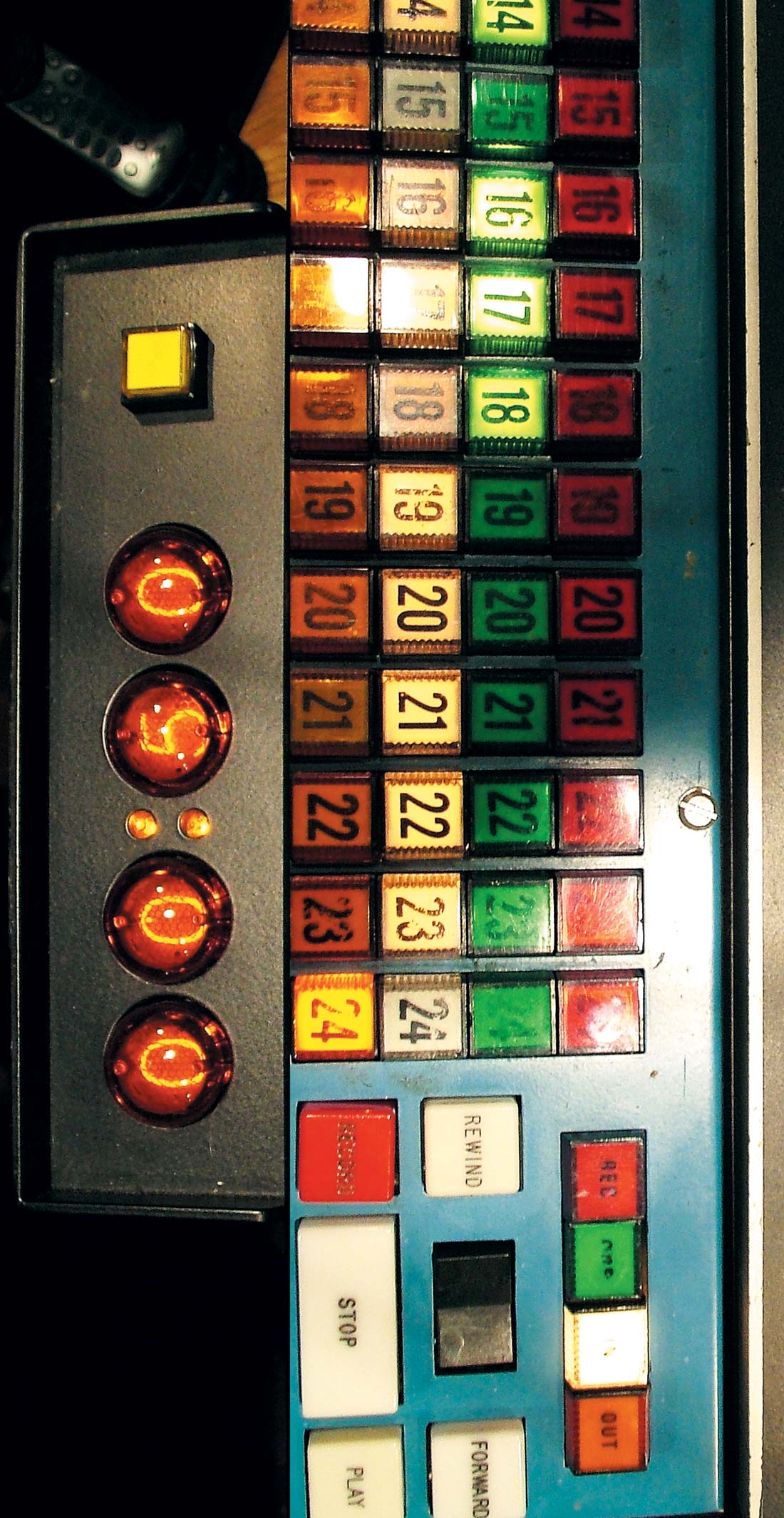

_display_horizontal.jpg)
